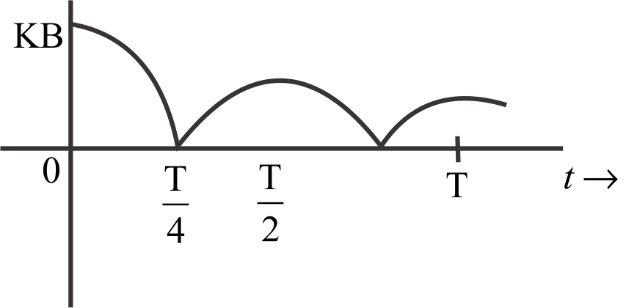Question
Question: A particle is executing simple harmonic motion with a time period \(T\). At the time \(t = 0\), it i...
A particle is executing simple harmonic motion with a time period T. At the time t=0, it is at its position of equilibrium. The kinetic energy-time graph of the particle will look like:
(a)

(b)

(c)

(d)

Solution
We have been given a particle having a simple harmonic motion about its equilibrium position. And we know whenever a particle performs the simple harmonic motion, it varies with time. And velocity at the mean position will be maximum. By using all this information we can answer this question.
Complete Step By Step Solution:
After executing the simple harmonic motion, the position of the particle will be
So it can be represented as -
x=Asinωt
Now the velocity function can be represented by,
Velocity function is v=dtdx
Since,
v=Aωcosωt
Kinetic energy, K.E. will be written as
K.E=21mv2
On substituting the values of the velocity, we get
⇒21mA2ω2cos2ωt
From this, we can say that the kinetic energy will be directly proportional to the cos2ωt
Mathematically, it can be written as
⇒K.E∝cos2ωt
But at t=4T
The value of the angle will be
⇒cos(ω4r)=0
Therefore by putting the values, we get the kinetic energy will be equal to zero.
Mathematically, it can be written as
⇒K.E=0
Now we will check at t=2T
The value of the angle will be
⇒cos(ω2r)=−1
Therefore by putting the values, we get the kinetic energy will be positive and hence kinetic energy will be maximum.
Now we will check itt=T, we get
The value of the angle will be
cos(ωT)=1
Therefore by putting the values, we get the kinetic energy will be positive and hence kinetic energy will be maximum
So from all the equations we had got the options A to match all the criteria.
Note: When harmonic motion occurs harmonic functions are the waveforms of the motions that result. In other cases, for example, various musical instruments, when the player stimulates the instrument in a certain way, multiple wavelengths of response are being stimulated at the same time. In that case, the waveform produced will be a combination of different frequencies.
